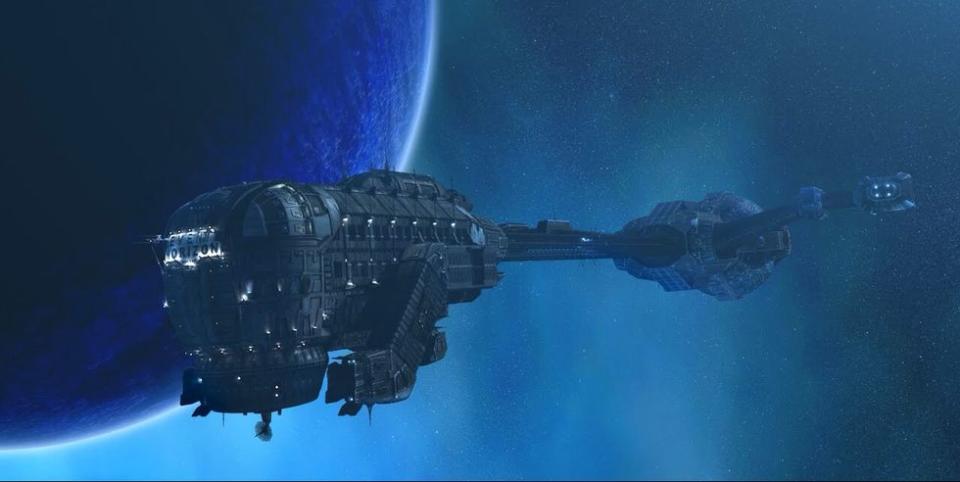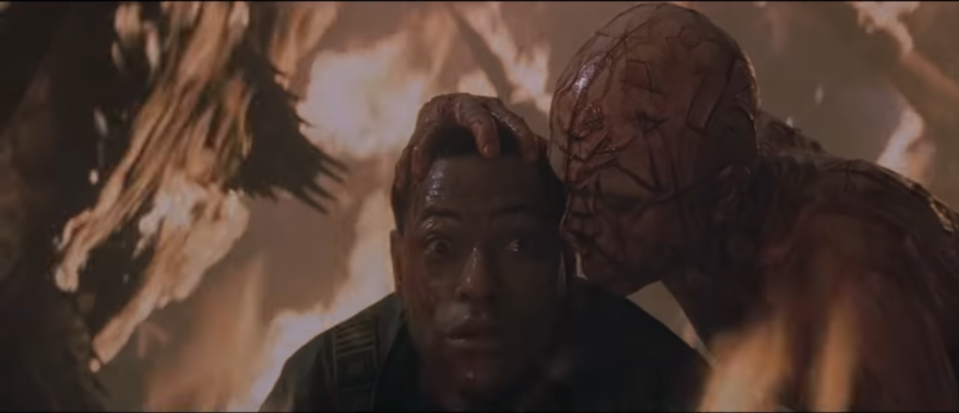‘Event Horizon’ 25 Years Later: Paul W.S. Anderson Looks Back on His Cult Hit

- Oops!Something went wrong.Please try again later.
- Oops!Something went wrong.Please try again later.

“Event Horizon” had an inauspicious start. Released in theaters August 15, 1997, it opened to mixed reviews and #4 at the box office. And then, a funny thing happened: In December 1998, when “Event Horizon” was released on the still-new DVD format, it started to find a cult following.
More from IndieWire
“That really propelled ‘Event Horizon’ to a new audience,” director Paul W.S. Anderson told IndieWire. “It’s a great-looking movie, and when you were watching it on VHS it didn’t really have the quality that it had in the cinema. When the DVD came out the quality jumped, and I think the stark beauty finally kicked in.”
Once the studio realized what they had, they made the most of it. “They started selling a lot of DVDs, and they would change the box without changing the movie, and they’d sell a lot of that version,” he said. “Then they’d change the box again!”
Paramount has yet another version of “Event Horizon” out this month in a gorgeous 4K upgrade for the film’s 25th anniversary. To revisit the film is to understand how jarring its gothic visual style and relentless horror must have seemed in a summer that embraced gentler science-fiction hits like “Men in Black” and “Contact.”
Screenwriter Philip Eisner’s tale of astronauts going mad aboard a haunted spaceship was exactly what Anderson wanted after his second feature, the PG-13 martial arts opus “Mortal Kombat.” That movie was a hit, which gave Anderson more freedom to do what he wanted, and what he wanted was to scare the audience with a gory riff on horror movies like “Alien,” “The Shining,” and “The Haunting.” The challenge was figuring out how to honor their traditions without being enslaved by them, and Anderson solved that problem with his film’s key location.

Paramount Pictures
“I didn’t want ‘Event Horizon’ to be an ‘Alien’ wannabe or a ripoff,” Anderson said. “I felt that the way avoid that was to make it a Gothic movie and to base it on one of the best pieces of Gothic architecture in the world, the Notre Dame Cathedral in Paris. So we scanned the cathedral into a computer, broke it apart, and then built all the constituent elements of the Event Horizon ship from Notre Dame.”
Anderson’s ability to find futuristic sci-fi corollaries for the components of Notre Dame – turning the gargoyles into antenna clusters, for example – is a big part of why “Event Horizon” remains as eerie as, say, Robert Wise’s “The Haunting.”
During the “Event Horizon” test screenings, Anderson learned another lesson from Wise’s film: Even in a film as bloody as “Event Horizon,” less could be more. One of the movie’s biggest scares happens when Lieutenant Commander D.J (Jason Isaacs) appears behind Lieutenant Peters (Kathleen Quinlan) just after she sees a vision of her dead son, but it didn’t work in the initial cut.
“Originally the bed was covered in maggots, which I thought was going to be great, but it was too much for the audience and they looked away,” Anderson said. “So when Jason Isaacs turned up, nobody jumped. That was an important lesson for me, that horror is like comedy and there’s a right time to deliver the punch line. You don’t want to milk it too much.”
Beyond the construction of Eisner’s script and Anderson’s sense of style, much credit for “Event Horizon” belongs to its sturdy cast. Anderson had the opportunity to collaborate with an ensemble of experienced actors for the first time in his career, and he made the most it. “I think they all realized that it was only my third film and I didn’t come from a big theater background,” Anderson said. “They really helped me, and [Laurence] Fishburne in particular was a very giving man in terms of giving me pointers and nudging me in the right direction when it came to directing and judging good performances. He made copious notes in his script and something I would see quite frequently was ‘NAR.’ One time I went up to him and asked, ‘Fish, what does that mean?’ He said, ‘Paul, that means No Acting Required.”
In the script’s NAR moments, Fishburne’s character was in such extreme situations that he could simply react – something made easier by practical sets and effects. “He was in a real spaceship with real sparks flying and there wasn’t a huge amount of blue screen or green screen work,” Anderson said. “That was very important to me, because if you’re just sticking an actor in front of a blue screen and saying ‘imagine this is happening, imagine that is happening,’ you’re loading a lot of stuff on them before they even deliver a performance.”

Paramount Pictures
Anderson also learned the necessity of reconciling different acting styles during an early scene between Fishburne, who tended to be best in early takes, and [Sam] Neill, who liked to improvise and work up to his best performance.
“I learned my lesson very quickly,” Anderson said. “If you’ll notice, there’s only that one scene with the Steadicam shot where you see both of them talking at the same time. That took a long time to get because when Fishburne was killing it, Sam was slowly feeling his way toward a performance. And by the time Sam was killing it, Fish was checked out because he had already done it. After that, I shot all of their scenes together in more conventional coverage so I could pick and choose the best performances.”
Ultimately, Anderson felt the film’s scariest moments came from the actors’ reactions rather than the terrifying events themselves. “I made a movie called ‘Alien vs. Predator,’ so I worked with two of the deadliest creatures in the universe,” he said. “And the reality of the two deadliest creatures in the universe is that they’re guys in rubber suits who can barely stand up and can’t see where they’re going. They’re not terrifying at all. In the first ‘Alien,’ what sells that it’s a terrifying creature rather than a man in a rubber suit is Sigourney Weaver’s reaction. She made you believe the horror. It’s the same thing in “Jurassic Park,” where they play the arrival of the beautiful, expensive CG dinosaur off Sam Neil’s reaction. You see his reaction to the dinosaurs before they show you the CG shot and you are ready to believe that what he’s seen is awesome because he sold it. Those were important lessons for me. Nothing scares an audience more than their own imagination.”
This article was published as part of IndieWire’s ’90s Week spectacular. Visit our ’90s Week page for more.
Best of IndieWire
All the Details on 'Hunger Games' Prequel 'The Ballad of Songbirds and Snakes'
Quentin Tarantino's Favorite Movies: 40 Films the Director Wants You to See
Sign up for Indiewire's Newsletter. For the latest news, follow us on Facebook, Twitter, and Instagram.

